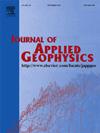Exploring the challenges of using 2D seismic reflection imaging in basement aquifers: A case study from Southern Sinai, Egypt
IF 2.2
3区 地球科学
Q2 GEOSCIENCES, MULTIDISCIPLINARY
引用次数: 0
Abstract
The Sinai Peninsula is one of the most important and promising regions for development in Egypt because of its economic significance and strategic location. In the southern part of the peninsula, groundwater resources exist in basement and alluvial aquifers. This study investigates the challenges of acquiring, processing, and interpreting two-dimensional (2D) seismic reflection data over southern Sinai's aquifers and provides mitigations for these challenges. Specifically, five 2D seismic profiles were collected to map the depth to the saturated zone and the depth to crystalline basement rocks, and to delineate subsurface structural features. Data acquisition was challenging due to narrow wadis (profile length: 235 m), construction activities, and coarse-grained sediments that hindered geophone contact and resulted in relatively noisy records. Data processing also faced numerous challenges due to heterogeneous alluvial deposits, fractured basement rocks, energy loss from diffraction and scattering, multiple events, and lower impedance contrast. Defining three seismic subsurface units (unsaturated zone, saturated zone, fractured basement) was challenging because lithologic logs/records were distant from the profiles, and picking horizons and faults was limited by seismic resolution, reflector interference, discontinuities, and subsurface heterogeneity. Results indicated that the thickness of the unsaturated zone and saturated zone ranged from 15 to 40 m and 22 to 55 m, respectively, with the depth to the fractured basement ranging from 22 to 80 m. Results of this study could guide seismic imaging techniques in basement aquifer systems across similar areas elsewhere.

求助全文
约1分钟内获得全文
求助全文
来源期刊

Journal of Applied Geophysics
地学-地球科学综合
CiteScore
3.60
自引率
10.00%
发文量
274
审稿时长
4 months
期刊介绍:
The Journal of Applied Geophysics with its key objective of responding to pertinent and timely needs, places particular emphasis on methodological developments and innovative applications of geophysical techniques for addressing environmental, engineering, and hydrological problems. Related topical research in exploration geophysics and in soil and rock physics is also covered by the Journal of Applied Geophysics.
 求助内容:
求助内容: 应助结果提醒方式:
应助结果提醒方式:


